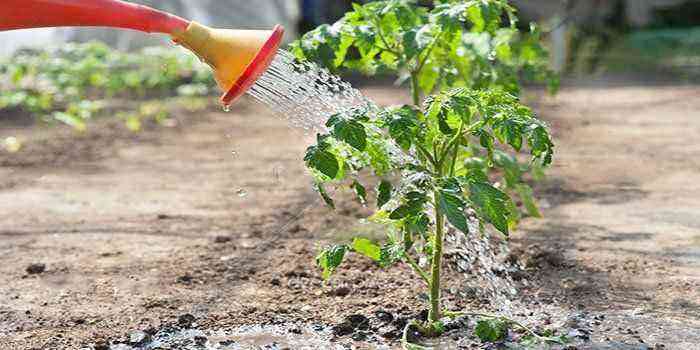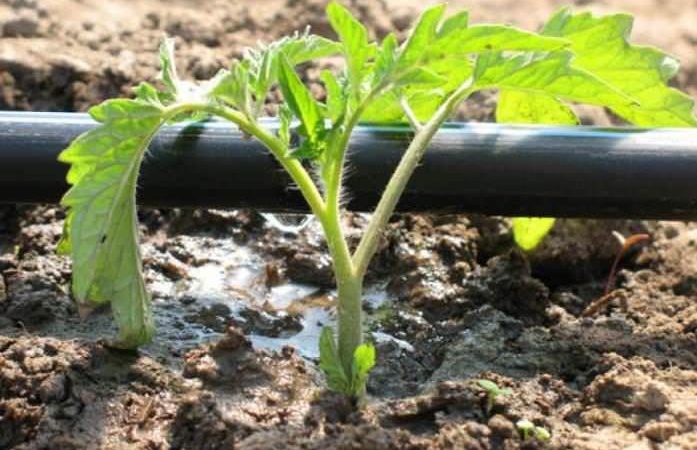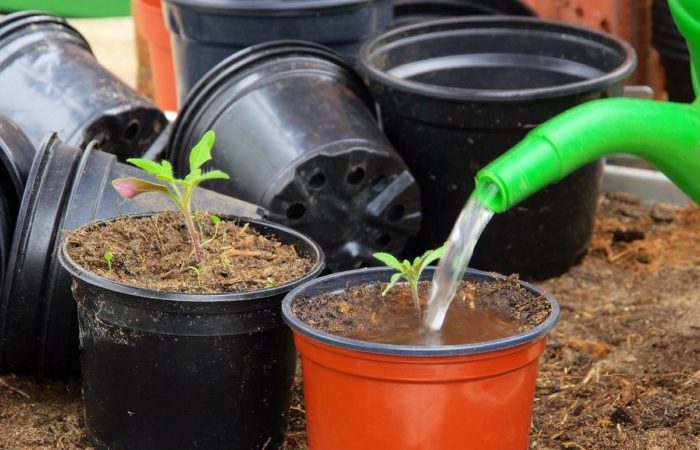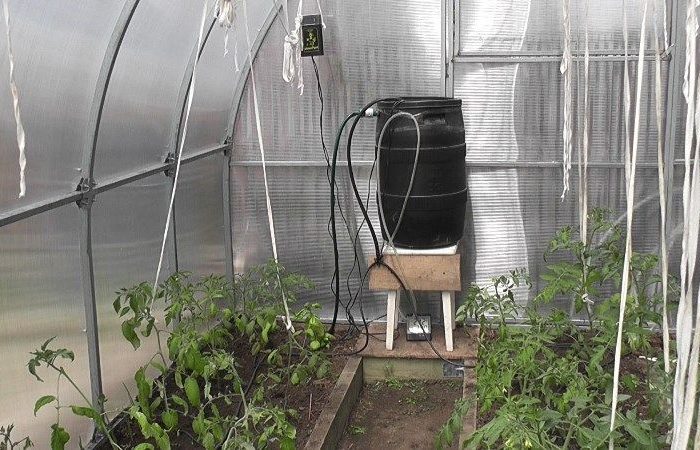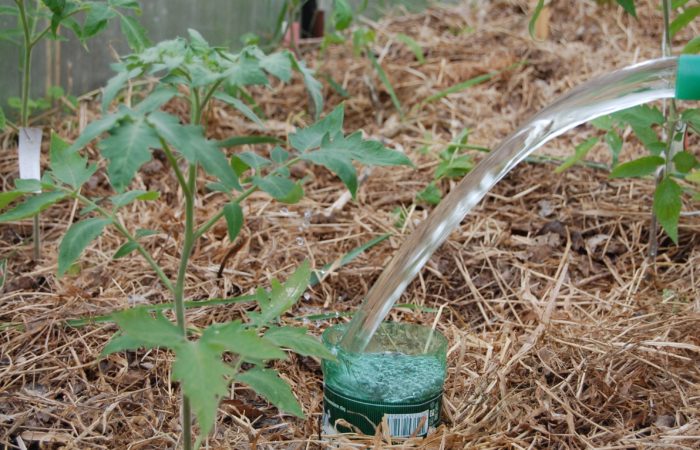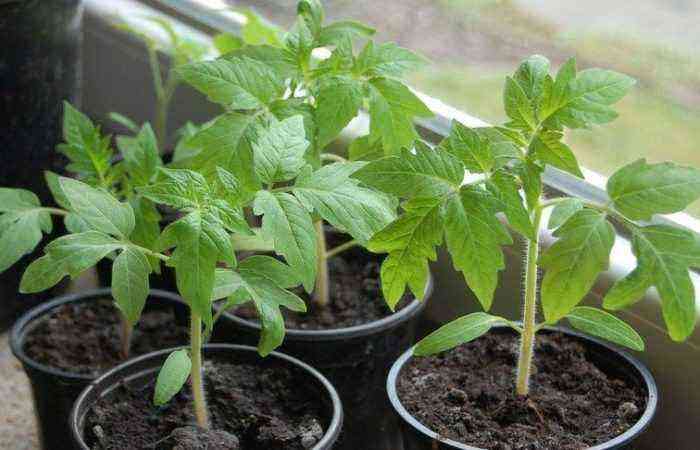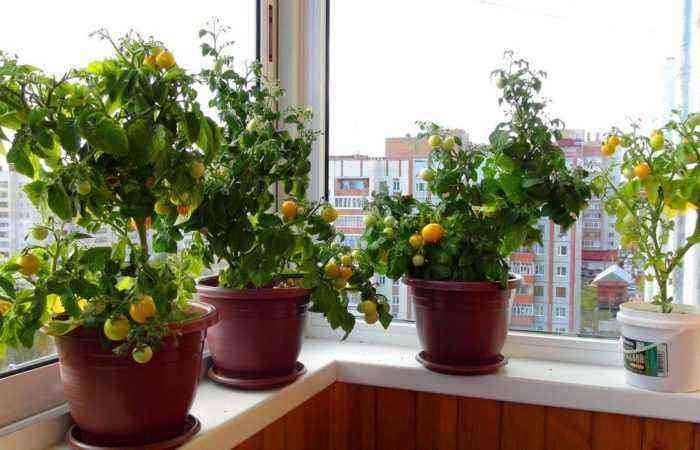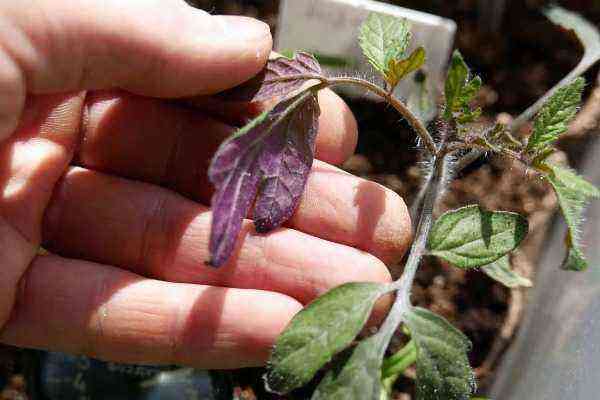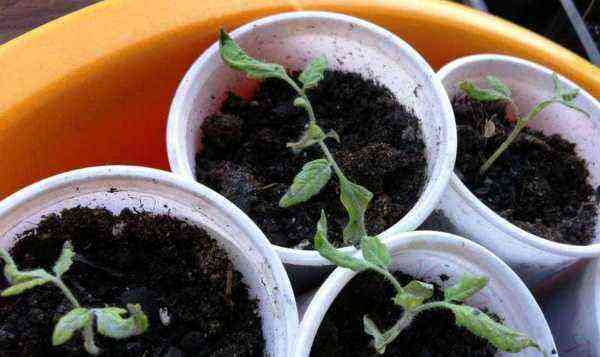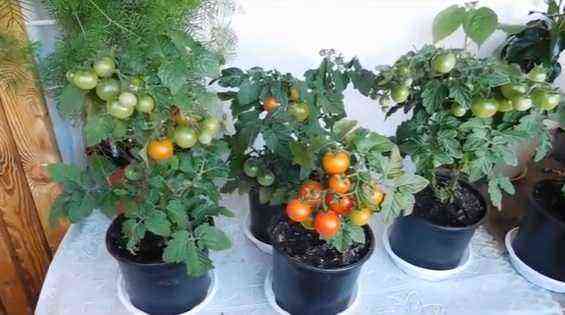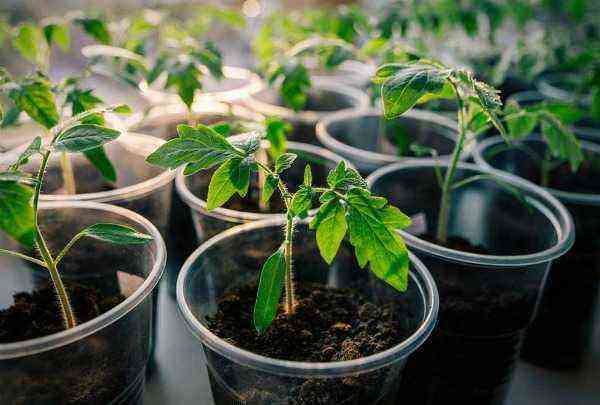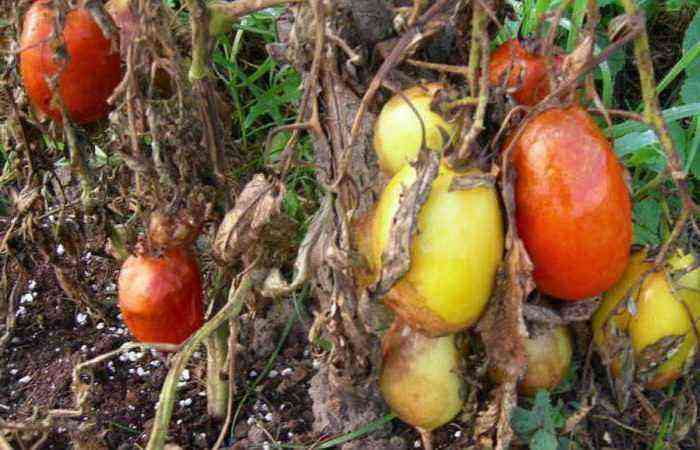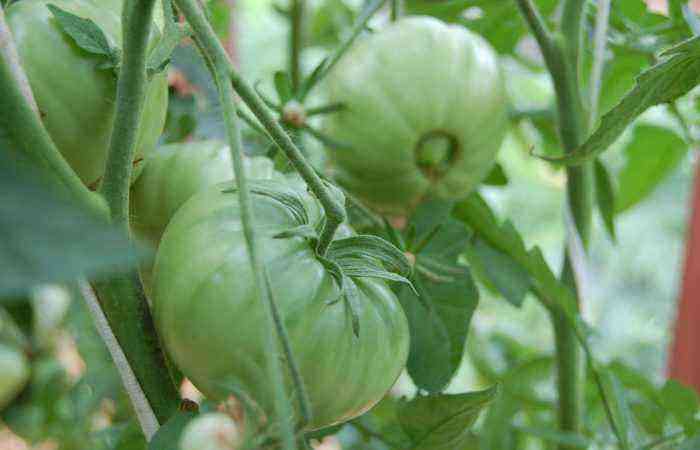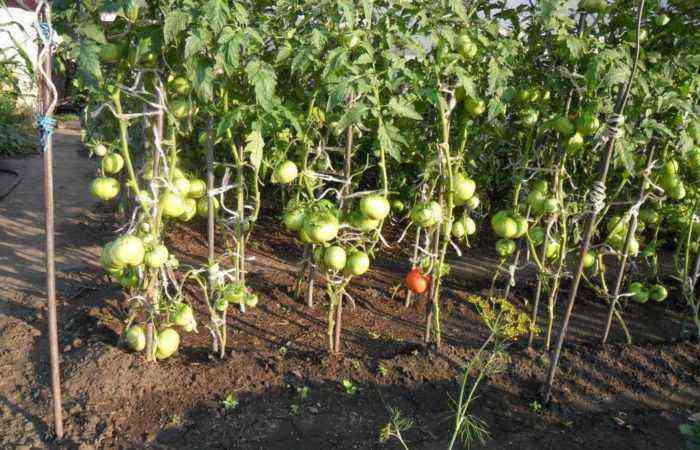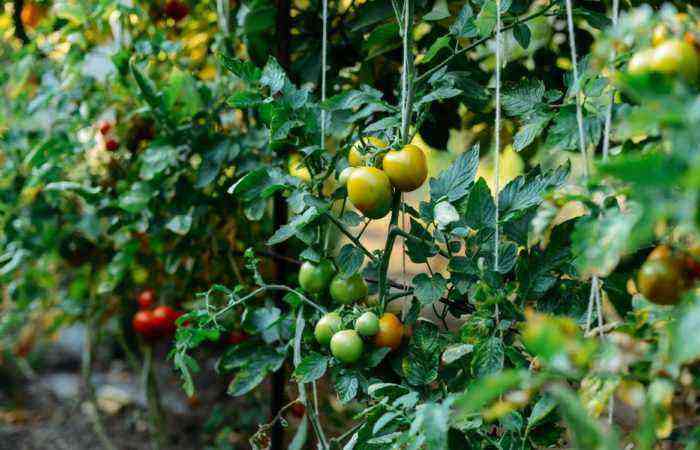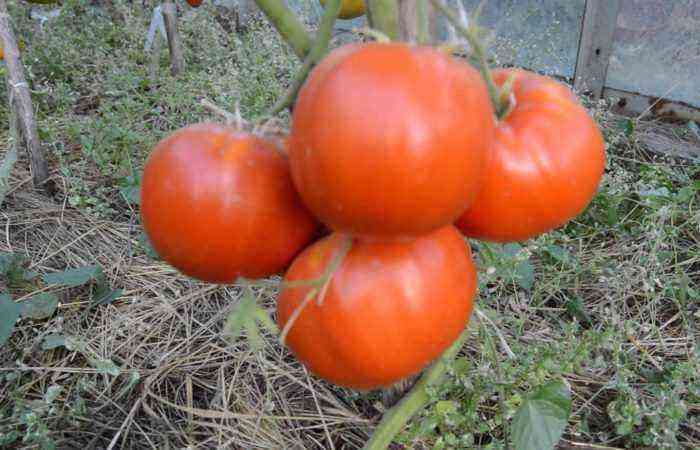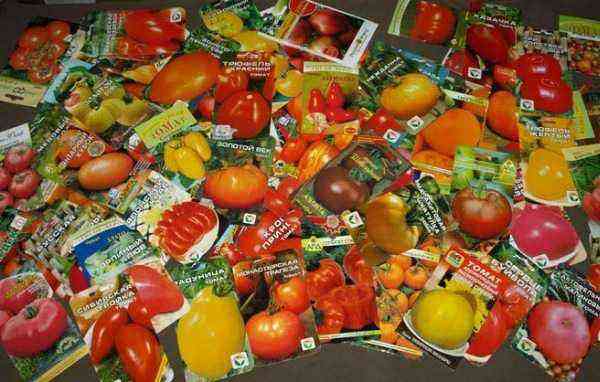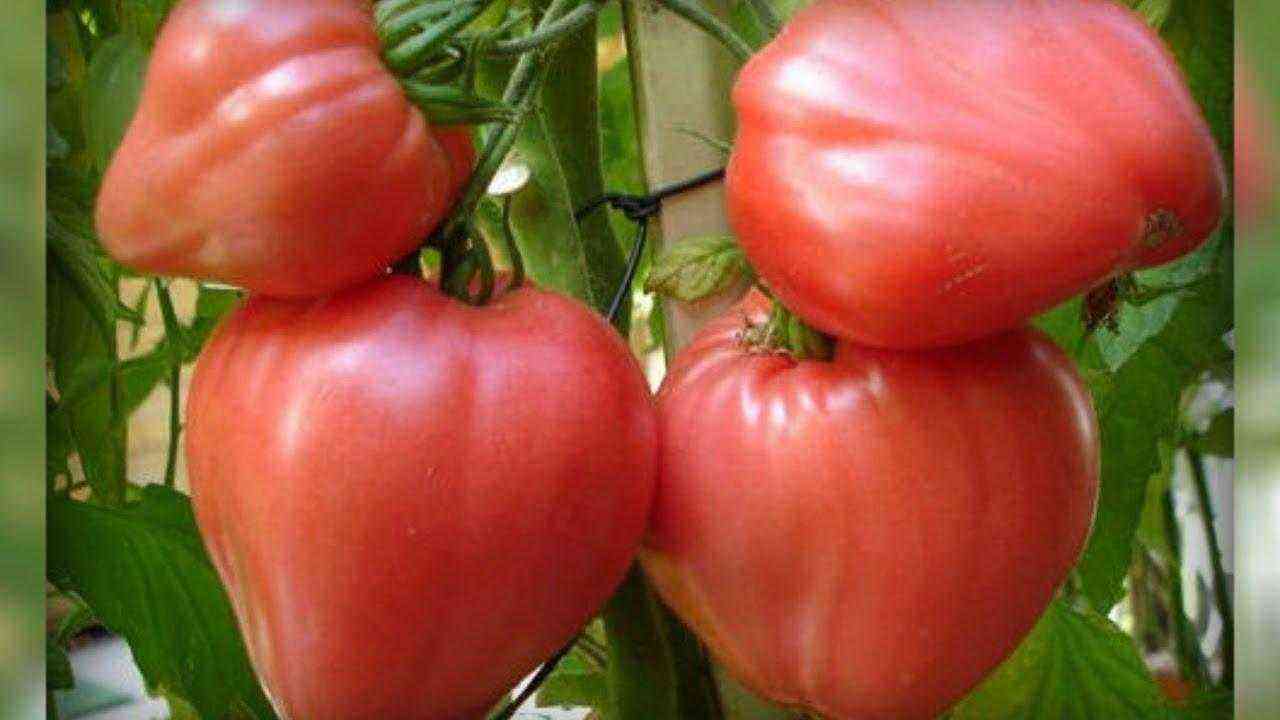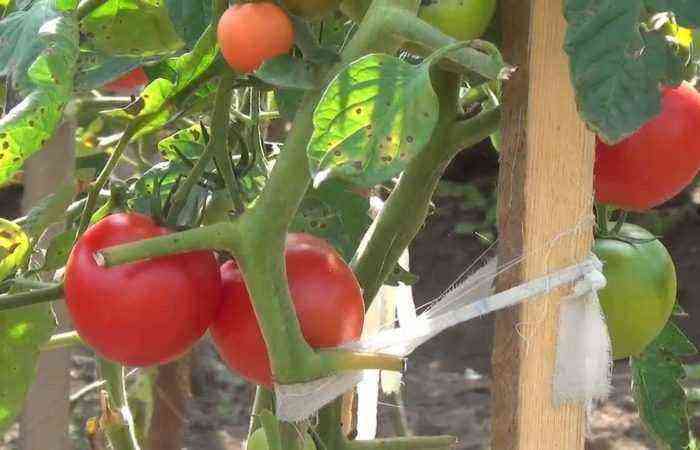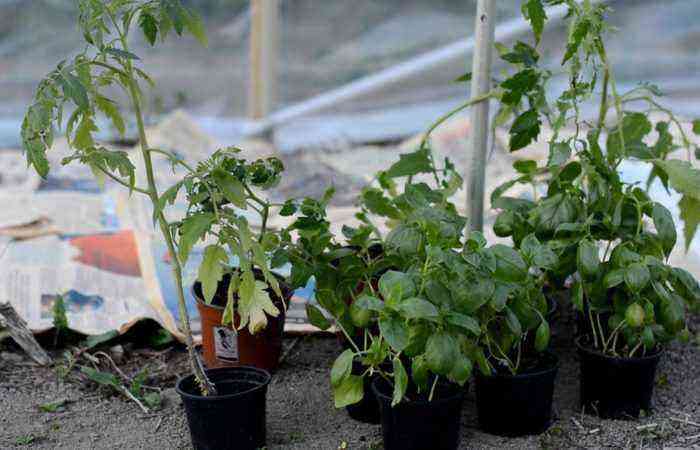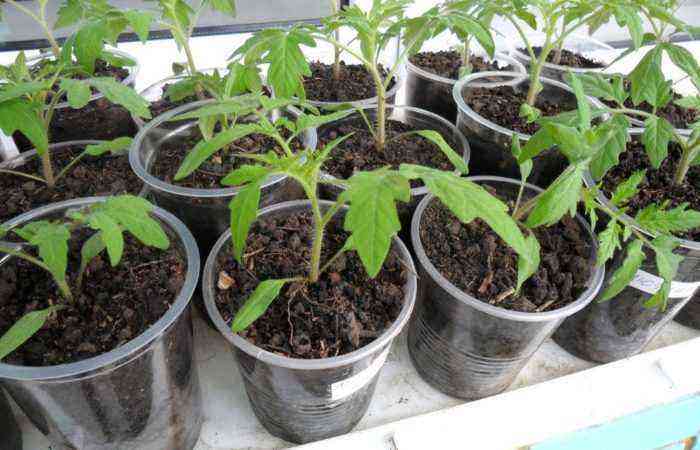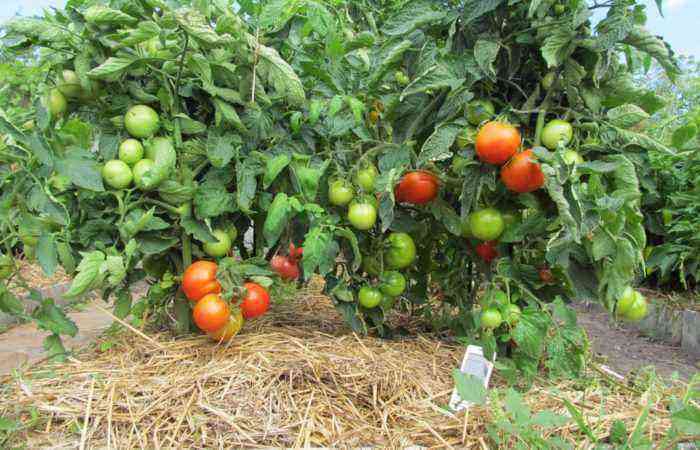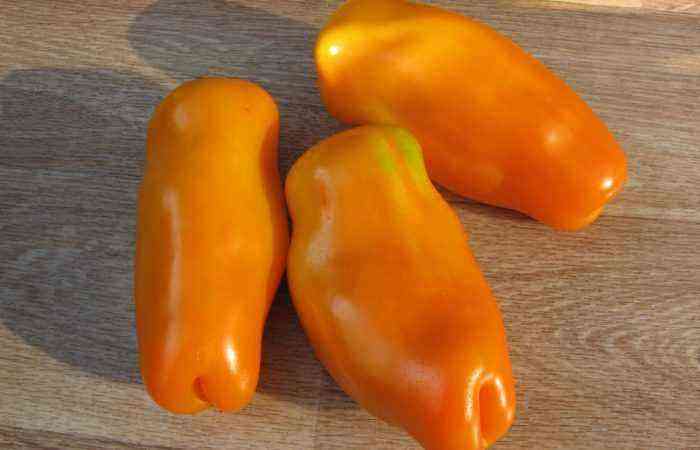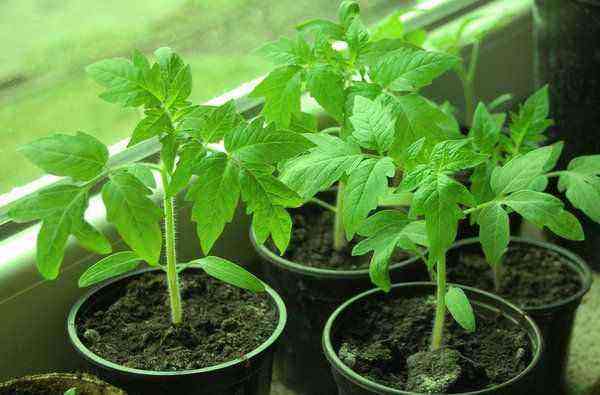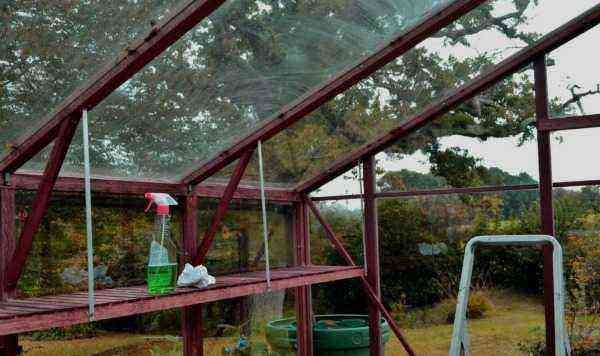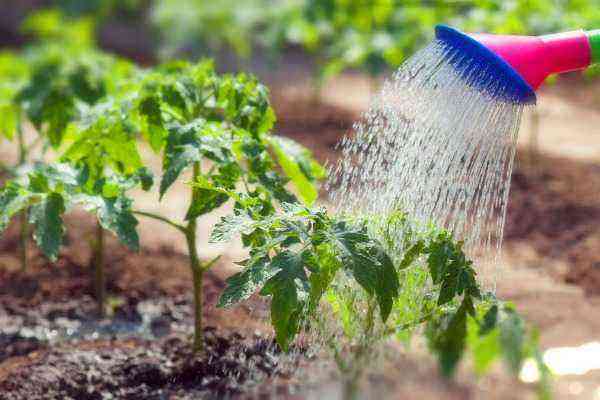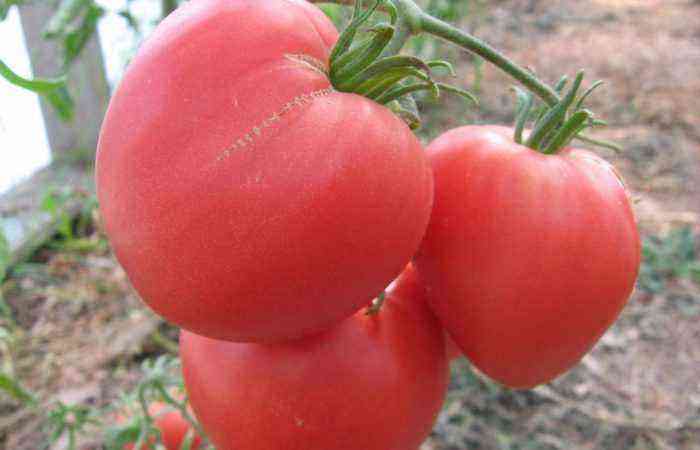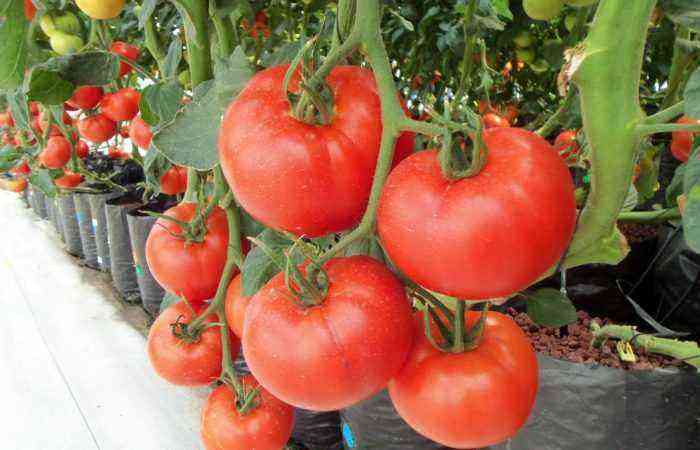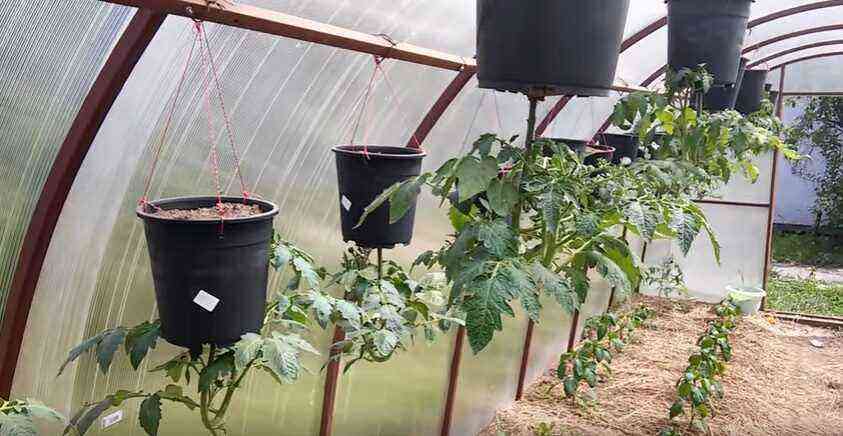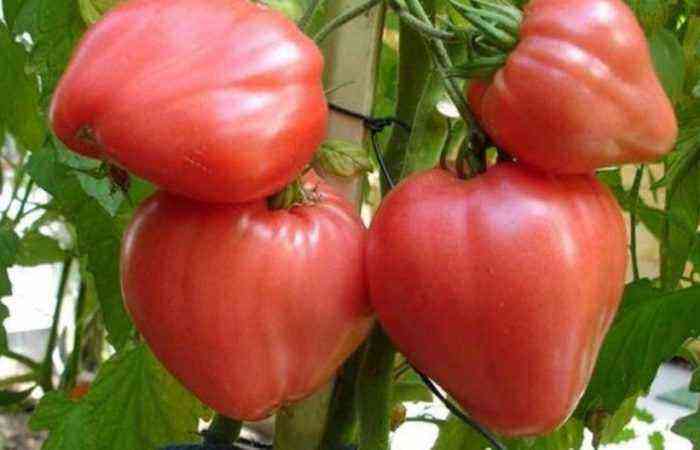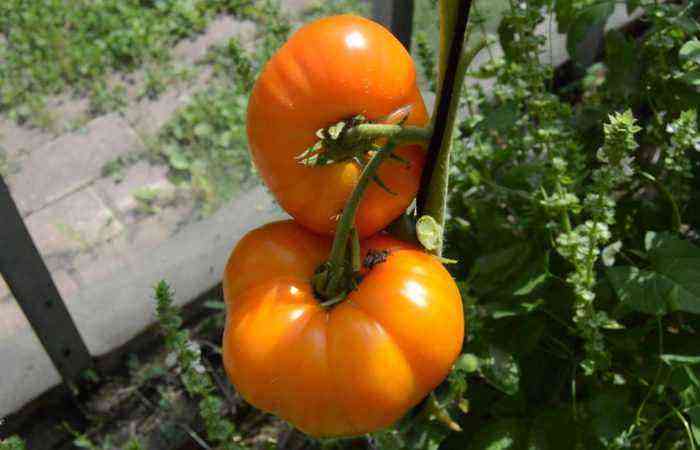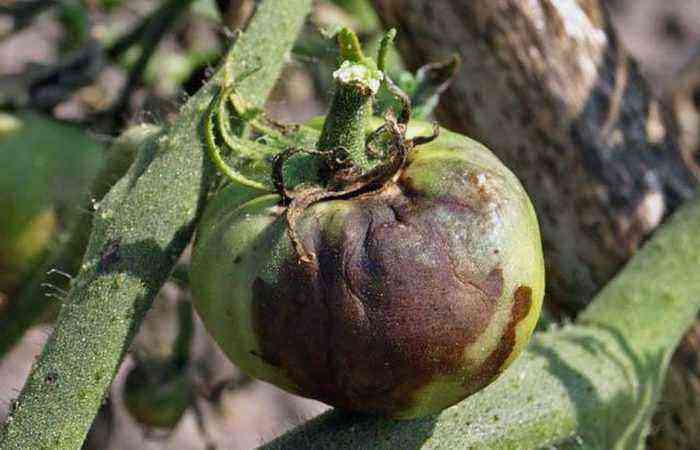Since plants are able to absorb nutrients only in dissolved form, the presence of moisture is a prerequisite for growing. Watering is especially relevant in greenhouses, where plants cannot get moisture from natural sources: rain, dew, fog.
After the use of soil water, irrigation remains the only source of replenishment. Here it is very important to know the rules and regulations in order to provide the plants with the necessary amount of moisture and create a favorable climate in the greenhouse.
The microclimate of polycarbonate greenhouses
Protective structures allow not only to maintain the optimum temperature for growth, but also contribute to the preservation of moisture in the greenhouse. If you do not carry out ventilation, the moisture after watering will begin to evaporate, and the humidity in the greenhouse will increase. A humid environment is not good for tomatoes, so ventilation must be provided. The soil, on the contrary, should be moist, but not wet.
Optimum soil and air humidity
Tomatoes are very sensitive to moisture. They prefer low air humidity (45-50%) and a fairly high level of soil moisture (85-90%).
Why follow the rules for watering tomatoes in a greenhouse
Tomato plants respond equally poorly to both lack and excess moisture.
In case of insufficient watering:
- nutrients are poorly absorbed;
- the root system develops poorly and the growth of the vegetative mass slows down;
- fruits do not gain weight well and are capable of shedding.
The lack of moisture at the initial stage of the plant is signaled by twisting the leaves with a boat.
For overwatering:
- the risk of developing diseases increases;
- air exchange processes and mineral nutrition worsen;
- fruits crack and rot.
How to water tomatoes in a greenhouse?
How often to water
Tomatoes prefer watering not frequent, but plentiful, wetting the soil at the entire depth of the root system.
Attention! Based on climatic conditions, watering plants should be carried out no more than 1-2 times a week.
Frequent, slight watering moistens only the upper part of the soil, without saturating the roots with moisture, but creating dampness in the greenhouse. Excessive moisture contributes to a decrease in soil temperature and creates favorable conditions for the development of diseases.
What time of day
The best time for watering in sunny weather is in the evening, 2-3 hours before sunset. This time will allow the water to soak into the soil and the plants to dry out. During the night, moisture will be evenly distributed in the soil and will begin to be absorbed by the root system, air humidity will normalize.
On cloudy days, watering can be done at any time, but you need to pay attention to the air temperature. If it is low in the morning, it is better to wait for the temperature to rise during the day.
How many
Water consumption directly depends on the following factors:
- plant age;
- growth phases;
- bush type;
- environmental conditions.
For one plant, it ranges from 0,5 liters after planting seedlings, up to 5-10 liters during the period of growth of the vegetative mass and mass fruit set.
Watering frequency
The frequency is directly dependent on solar activity. The more sunny days, the more often watering is required. But you need to make it plentiful so that the frequency is no more than 2 times a week.
Watering in the heat
In hot, sunny weather, the soil dries out faster, and the frequency increases to 2 times a week. When the soil is moist, the plants cool off by rapidly evaporating the moisture from their leaves. This allows them to easily tolerate heat over 30°C. Watering under scorching sunlight should not be done. The dew drops formed on the leaves, like lenses, refract the sun’s rays, and the tissues get burned, and late blight spores are fertile ground for germination.
In rainy weather
It creates increased air humidity, therefore, especially at this time, waterlogging of the soil should not be allowed. During this period, it is necessary to loosen the soil and ventilate the greenhouse more often.
When to stop watering tomatoes in a greenhouse?
If the formation of the main number of fruits is over or a decision is made to pinch the growing point in order to direct the plant’s forces to ripening, watering the plants can be stopped. For early varieties, this period begins in August. Late varieties continue to develop intensively and need full watering.
If the weather conditions worsen in autumn, the air temperature drops and daylight hours shorten, the need for plants in water decreases, and watering is reduced. During the period of ripening of the last fruits, watering is completely stopped.
How to properly water tomatoes, how much water is required for this – says the author of the video.
What water to use
- Warm water.
You can not allow sudden changes in temperature, so watering is best done with warm water. In hot weather, it is heated by the sun and can reach 23-25ºС, that is, be close to the ambient temperature.
- Cold water.
In cloudy weather, use water heated to 18-22ºС. Water at a lower temperature helps slow down metabolic processes and the development of diseases.
Advice! Use settled water or rainwater, which has less hardness.
Irrigation technology
- Manual watering.
Used in small greenhouses and when growing seedlings. Small seedlings can even be watered with a pipette or syringe so as not to moisten the plant and bend it to the ground. The grown seedlings are watered from a bucket or mug, but also under the spine. Mature plants are difficult to water in this way.
The use of a hose is very common and greatly facilitates the work. This method also has disadvantages:
- it is difficult to avoid getting water on plants;
- under the pressure of water, the soil at the roots is eroded;
- it is difficult to determine the water consumption for a plant.
If you apply watering from a hose, then it is better to do it in pre-prepared grooves. For two-row plantings, three recesses are made, decorated with sides of the earth (one between the rows, the other along the edges). The hose is laid in a groove and slowly filled with water, which gradually absorbs and moistens the soil.
- Drip irrigation.
This is a very modern and effective way of moistening the soil, although it is more expensive. Water is supplied through hoses, with holes made in them, directly to each plant. At the same time, the water supply is strictly dosed, watering is turned on at the right time, water falls on the ground in drops with a certain rhythm. Plants remain dry, the soil structure is not disturbed and evenly moistened.
- through plastic bottles.
Many gardeners use a cheap and easy way to deliver water directly to the roots using plastic bottles. They are buried one by one at each bush, in the area of uXNUMXbuXNUMXbthe roots, having previously cut off the bottom. Holes are drilled for gradual penetration of moisture. Water is poured into a bottle from a hose, watering can or mug and it moistens the soil at the roots and to a sufficient depth.
- Auto.
Modern equipment allows not only to dose the amount of water supplied, but also to control the temperature, humidity of the soil and air. Depending on the received parameters, the system is automatically turned on. Well-tuned automatic systems minimize human involvement.
Automatic irrigation start is used both for the drip method and for special small-drop sprayers, to which water is supplied through hoses. They are laid on the ground or extremely low to it.
Advice! In stationary polycarbonate greenhouses, it is more expedient to use drip irrigation.
Watering in the greenhouse and growing stages of tomatoes
At different stages of growing a tomato plant, there are different requirements for watering and humidity.
When planting seeds
Tomato seeds are sown in well-moistened soil, retain moisture until germination with the help of film, glass and other transparent materials that cover the growing container. Before germination, crops are not watered, and after their mass appearance, watering is started.
The top layer of soil should not be allowed to dry out, as the root system of young seedlings is located here. Watering during this period is carried out often, almost daily.
Before picking (for 1-2 days), the seedlings are thoroughly watered so that the plants are saturated with moisture. Seedlings planted in moist soil begin to be watered for 4-5 days with a frequency of once every 6-7 days. To improve the development of the root system, trays with water are used, in which pots with drainage holes are placed, through which water enters the roots from below.
After transplanting
Before planting seedlings in a permanent place, it is abundantly watered for a day, so that the clod of soil around the roots is moist, but does not fall apart. Immediately after planting, light watering is done and water is not used for the next 5-7 days (unless the soil dries out during high heat). During the engraftment period, seedlings will consume a small amount of moisture.
During flowering
The established seedlings will begin to develop intensively and a sufficient amount of moisture will be required to form a vegetative mass, set and pour fruits. Watering during this period should not be frequent, but plentiful.
During fruiting
Watering of early ripening determinant fruits during the ripening period is practically stopped. Thus, they contribute to the amicable maturation of the formed ovaries. Varieties that ripen gradually and continue to grow and lay new fruits continue to be watered as usual. To speed up maturation, reduce watering and pinch the top of the plant.
Useful Tips
The following recommendations will be useful:
- Remove water containers from the greenhouse or cover them so that the moisture level does not increase when the water evaporates.
- Don’t let the soil dry out. Subsequent abundant watering will lead to cracking of the stem and fruits.
- If moisture does not penetrate well into the soil due to its dense structure, use preliminary loosening or piercing the soil with a pitchfork.
If after watering it is planned to carry out fertilizing with aqueous solutions of fertilizers, take into account the rate of water consumption, taking into account them, in order to prevent an excess of moisture. - If, nevertheless, an excess of moisture has formed in the greenhouse, actively ventilate it and loosen the soil.
In order for water to become an assistant in the production of a rich harvest, it is necessary to strictly observe the norms and rules for irrigating tomatoes in a greenhouse and be able to navigate the frequency of it.
